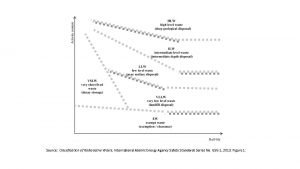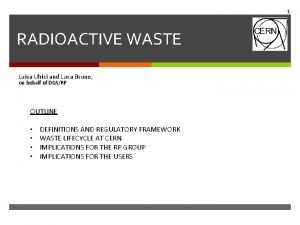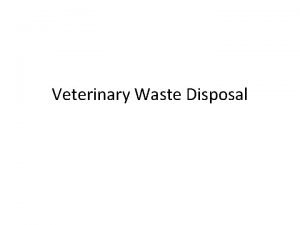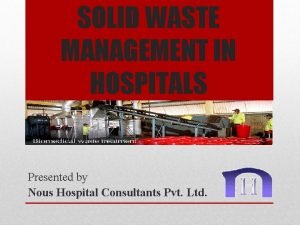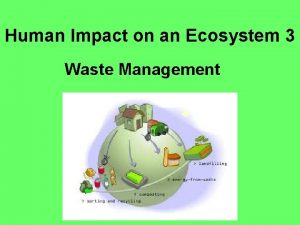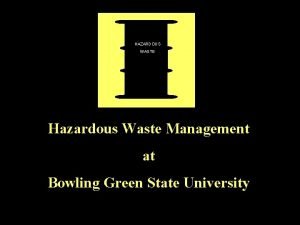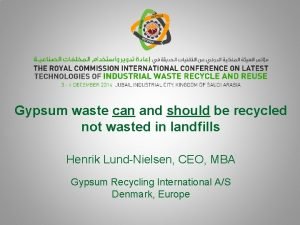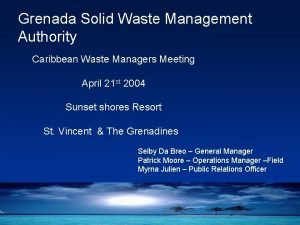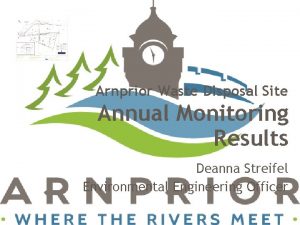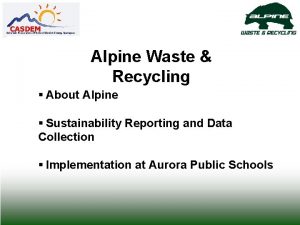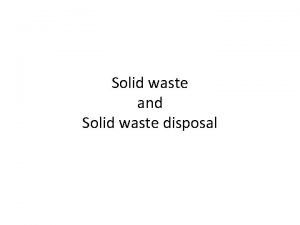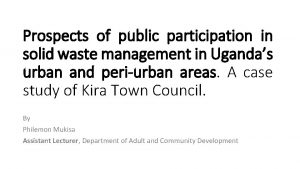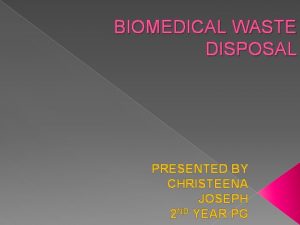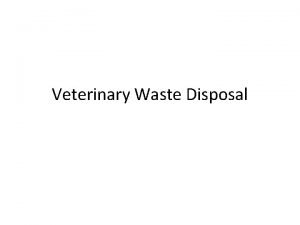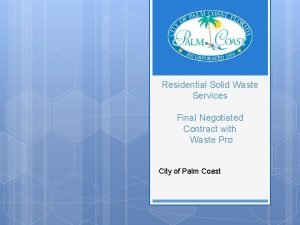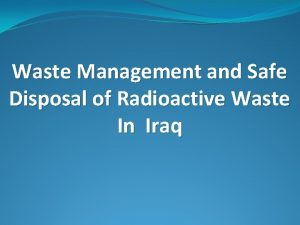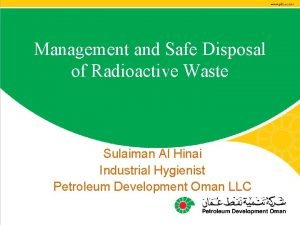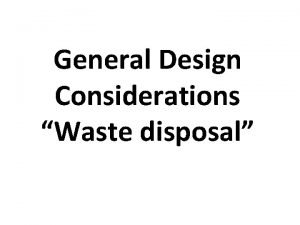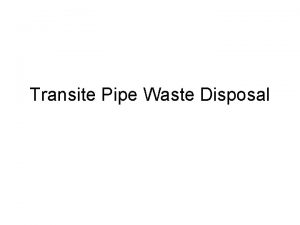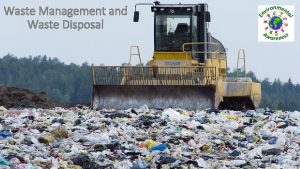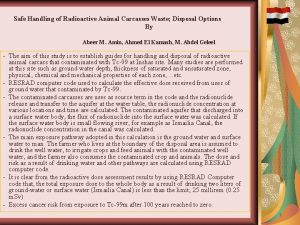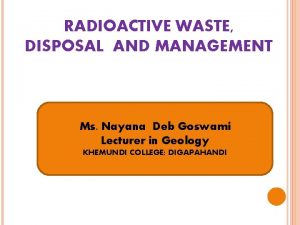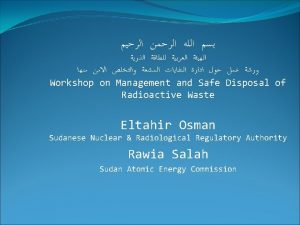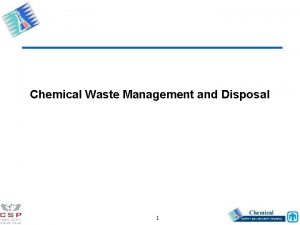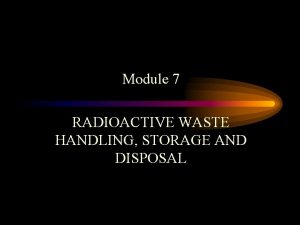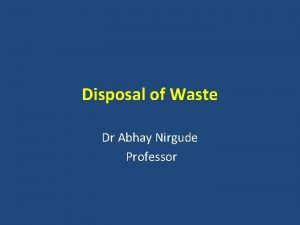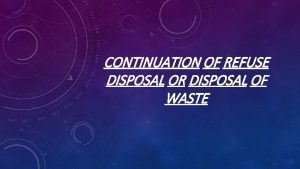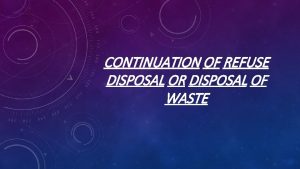Management and Safe Disposal of Radioactive Waste COUNTRY




















- Slides: 20

Management and Safe Disposal of Radioactive Waste COUNTRY STATUS: ZIMBABWE By Rujeko Lynette Mpandanyama Tunis, 17 -21 March 2014


RPAZ BACKGROUND • The Radiation Protection Authority of Zimbabwe (RPAZ) was established as an instrument of the Radiation Protection Act Chapter {15: 15} of 2004. • Mandate - protecting people and the environment against the harmful effects of ionising radiation. • Board -The Regulatory Authority’s policy matters are presided over by a ten-member Board of Directors. • The day-to-day functions of RPAZ are overseen by the Chief Executive Officer.

RPAZ Background • RPAZ commenced operation in 2009 • The Authority has a staff compliment of 35 which is divided as follows: Ø Chief Executive Officer Ø 15 technical staff (scientists, managers) Ø 20 supporting staff (administrators, HR, IT, receptionist, auditor, registry clerk etc. )

Regulatory Framework • The Radiation Protection Act, enacted in 2004, provides the legislative basis for radiation protection • The Act refers to and incorporates the provision of the Code of Conduct on the safety and security of radioactive sources and the legislative framework is consistent with the principal requirements of the BSS. • The Authority conducts inspections, at least once a year on each of the radiation facilities to ensure compliance with standards

APPLICATION OF RADIOACTIVE SOURCES • Radioactive material is used in ü medicine, ü industry, ü research and education.

Inventory • 320 Medical x-ray equipment (CT, fluoroscopy, mammography, veterinary and general x-ray machines, linear accelerators) • 3 Brachytherapy units(Ir-192, Cs-137) • 80 Industrial x-ray equipment (XRF, whole body scanners, baggage scanners, diamond sorters, industrial radiography x-ray tubes) • 170 Sealed sources in industry and mining facilities (Co-60, Cs-137, Am-241, Sr-90) • Research and education(neutron soil moisture detector, electron capture, Ba-137 m generator, K-40, I-125, P-32, C 14) • 60 Disused sealed sources

Environmental Monitoring for Purpose of Radiation Protection • The Authority through its Strategic Plan of 2013 has included environmental management in its organisational structure. • Although no monitoring systems in place and there is no control of discharges currently, equipment has recently been acquired and the authority is in the process of establishing an environmental monitoring program.

National Waste Management Policy and Strategy • The regulatory framework for the control of radioactive waste is the Radiation Protection (Safety and Security of Radiation Sources) Regulations, Statutory Instrument 62 of 2011 Part VIII. • A separate policy on Radioactive waste management does not exist. • Registrants and licensees are primarily responsible for safe management of waste • Zimbabwe’s current position is that all disused sealed radiation sources should be returned back to supplier/ manufacturer after useful life.

National Waste Management Policy and Strategy • No repository has yet been designed to fully execute this regulatory mandate but there is a temporary radioactive waste storage facility where conditioned sources are kept in well-shielded containers. • Government has shown commitment to the project as it has allocated the Authority land where they will build their premises that will incorporate environmental monitoring laboratory and radioactive waste management facility.

National Waste Management and Decommissioning Legislative and Regulatory Framework • Policy is that waste generators must return the sources to supplier or manufacturer when the source is no longer in use.

General Safety Provisions for Radioactive Waste and Decommissioning • Disused sealed sources are kept at manufacturing and mining facilities in storage rooms/containers approved by the authority until they are returned to supplier/ manufacturer. • The authority conducts inspections to see if the sources are still there and secure • Before the users send back their sources, they notify the authority first • No waste classification in place

Predisposal Management of Radioactive Waste • There are no developed procedures for waste characterization and segregation • Currently, there is no waste processing being done in the country • Waste from hospitals is allowed to decay in storage until activity is below exempt levels determined by the authority • Orphan sources are kept in a temporary radioactive waste storage facility.

Clearance Regime for Radioactive Waste • No limits and conditions for the removal of control from materials containing radionuclides have been set yet

Storage of Radioactive Waste • The main generators of radioactive wastes are the hospitals and arrangements have been made to store these, largely short-lived, wastes at the hospitals for decay. • Disused sources are kept at owner’s facility whilst they await to be sent back to the owner

Disposal of Radioactive Waste • Development of the waste management policy is also being considered. • Issues of waste acceptance criteria, siting, design, construction, operation, closure, and post closure will be considered • Currently, the authority requires licensees to return radioactive sources to supplier/manufacturer when it’s no longer in use

Remediation of contaminated land • There is no known facility that could currently have radioactive residue or generate radioactive waste

Challenges, Needs and Future Plans • The major challenge that RPAZ is facing is lack of expertise and equipment since it has just been set up. • The need to monitor scrap metal processing facilities to avoid incorporation of radioactive materials in their processing. • Acquisition of technical know-how and application of skills in the construction of a storage facility.

Presenter Rujeko Lynette Mpandanyama Radiation Scientist Radiation Protection Authority of Zimbabwe rmpandanyama@rpaz. co. zw Tel: +263 4 335 627, 335 683 Mobile: +263 772 811 874 Website: www. rpaz. co. zw

Thank you
 Radioactive pollution conclusion
Radioactive pollution conclusion Radioactive nuclear waste
Radioactive nuclear waste Radioactive waste
Radioactive waste Lindsay waste services
Lindsay waste services Bva waste disposal
Bva waste disposal Color coding for waste disposal
Color coding for waste disposal Waste disposal lyndon
Waste disposal lyndon 3 waste disposal
3 waste disposal Definition biomedical waste management
Definition biomedical waste management Waste bowling green
Waste bowling green Can gypsum be recycled
Can gypsum be recycled Grenada garbage
Grenada garbage Arnprior waste disposal site
Arnprior waste disposal site Alpine waste
Alpine waste Summary of biomedical waste management
Summary of biomedical waste management Area method of waste disposal
Area method of waste disposal Solid waste disposal introduction
Solid waste disposal introduction Pathological waste disposal
Pathological waste disposal Veterinary waste
Veterinary waste Define solid waste
Define solid waste Palm coast garbage collection
Palm coast garbage collection

